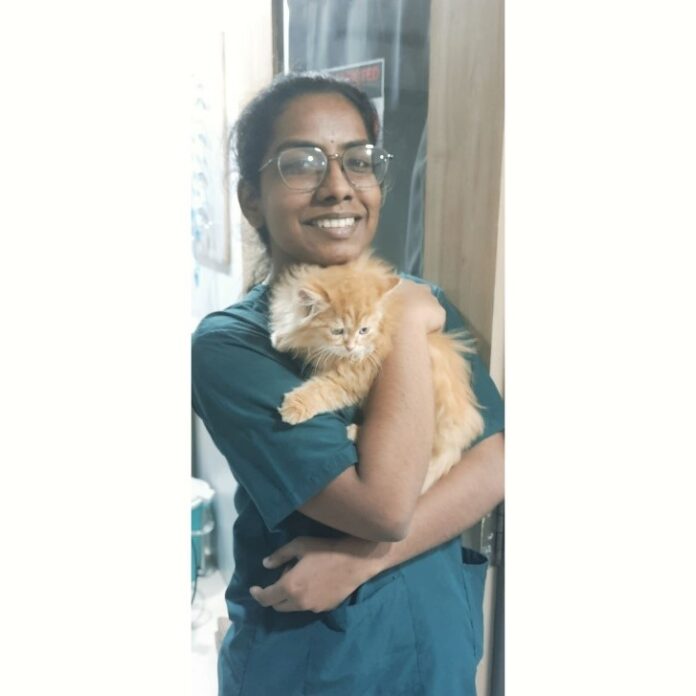Caring your cat with Diabetes
Dr. Rutuja Sawant , M.V. Sc Surgery and Radiology
Diabetes mellitus (or ‘sugar diabetes’) is a complicated condition caused by either an absolute or relative lack of the hormone insulin.
Insulin is hormone is critical in the control and utilisation of blood glucose (sugar), produced by special cells in the pancreas (an organ close to the liver). Insulin is produced and released into the blood in response to increasing levels of blood glucose, and this allows the glucose to be taken up by cells in the body (and used for energy) and helps to maintain normal levels of glucose in the blood.
Diabetes is one of the most common endocrine (hormonal) disorders of cats, but fortunately in most cases it can be diagnosed and managed successfully, although management options can be quite complex and treatment has to be adjusted to the individual cat.
Causes of Feline Diabetes:
There are two types of diabetes in cats. Type I occurs when there is a decrease in insulin production, while Type II occurs when cells in the body do not respond appropriately to insulin. Cats most commonly suffer from Type II diabetes.
Risk factors for feline diabetes include:
- Obesity
- Increasing age
- Lack of physical activity
- Being a male cat
- The use of glucocorticoids (steroids) to treat other illnesses
Common Symptoms of Diabetes in Cats:
Weakness in the back legs
Diabetes can cause nerve damage (or neuropathy) that changes the way a cat walks.
Increased thirst
Diabetic cats aren’t able to absorb and use glucose properly, which leads to high levels of glucose being filtered out through the urine, this means that your cat is losing too much water and will start trying to counter this by increasing its water intake
Excessive urination
Since the glucose in its body is leaving via urine, you may notice that your cat is peeing more often than usual.
Weight loss
Without proper glucose levels, cats can’t fuel their bodies. You may notice that your cat has lost a lot of weight recently, even though it’s eating the same amount of food.
Increased appetite
You may notice that your cat is constantly hungry or eats more food than usual. This could be because it isn’t getting the glucose that it needs from its normal diet, so it’s eating more to make up for it.
Distended abdomen
Your cat’s liver may be enlarged, which can distend its belly
Vomiting
Hyper-glycemia, or high blood sugar, happens when your cat has too little insulin in its body (or it can’t use its insulin properly). When this happens, your cat may feel nauseous or even throw up.
Cloudy eyes
High blood sugar can form cataracts over time. you’ll see cloudy eyes as a symptom of diabetes in dogs, not cats. However, it can occur in both species.
Rough coat
A lack of nutrients can affect your cat’s fur, although many other conditions can affect the skin coat.
Investigation
Diagnostic tests should include a complete blood count, chemistries, urinalysis with culture, and thyroid testing to rule out other diseases and identify concurrent disease processes that may complicate diabetes management. Serum fructosamine should also be evaluated to differentiate between short-term stress hyper-glycemia versus long-term problems with glucose regulation.
Treatment of feline diabetes:
Feline diabetes can be treated by a combination of insulin and dietary therapy.
The main goals of treatment are restoring normal blood glucose concentrations,
-stopping or controlling weight loss,
-stopping or minimizing signs of increased thirst and urination, and
-avoiding inappropriately low blood sugar due to treatment (hypo-glycemia).
While there is no cure for feline diabetes, the prognosis for a good quality of life is good with adequate management at home.
Administering Insulin:
Your veterinarian will teach you all about administering insulin for your kitty. Insulin administration is typically given 12 hours apart after meals. The needle size is small and most cats do fine with it. If you will be giving insulin, make sure you never shake the bottle of insulin and please keep your insulin refrigerated. Make it a comfortable experience for your kitty with appropriate treats and cuddles.
Monitoring Your Cat at Home
Monitoring a diabetic cat at home requires careful attention to a few things. Cats with well-controlled diabetes should maintain a normal activity level and demeanour. Owners should also monitor daily water intake, urine production, appetite, body weight, amount of insulin or medication administered, and possibly blood or urine glucose levels. Monitoring is best coordinated in close collaboration with your veterinarian to achieve optimal control over your cat’s diabetes.


